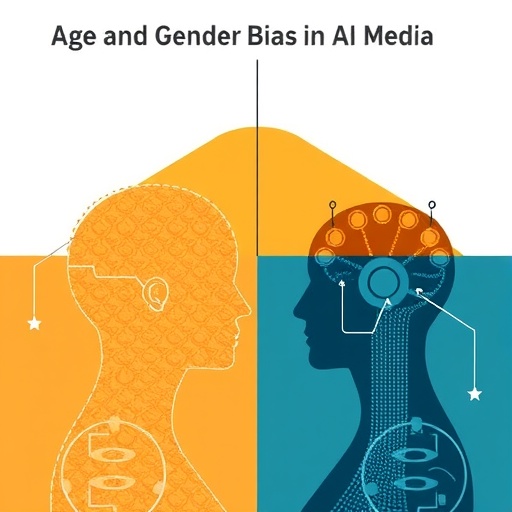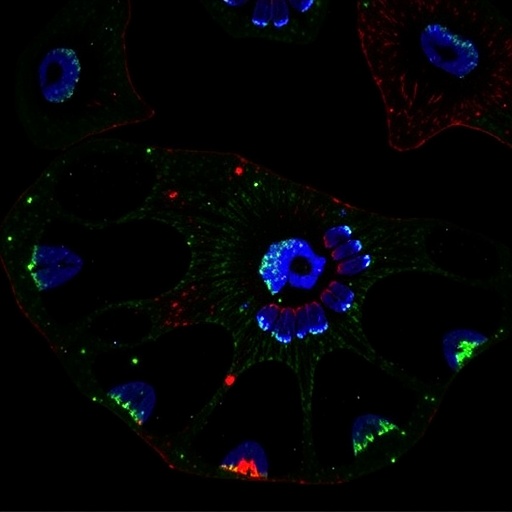In an era where online images, videos, and text increasingly shape societal perceptions, a groundbreaking study reveals how visual content on popular platforms like Google can systematically distort age-and-gender associations. This distortion, the research suggests, doesn’t just reflect existing biases—it actively amplifies them, subtly influencing how individuals estimate age and gender in the workforce, with profound implications for hiring and representation. The investigation, conducted through a carefully controlled experiment, provides new insights into the intersection of algorithmic exposure and social cognition.
The study recruited a nationally representative sample of 500 U.S. participants via the Prolific platform, with 459 completing the investigation. Participants were randomly assigned to either a treatment group, exposed to Google Image searches for occupation-related imagery, or a control group, tasked with searching for images unrelated to occupations, such as everyday objects. By engaging participants in a task where they searched, selected, and uploaded images depicting various professions in science, technology, and the arts, the research sought to measure the influence of visual cues on age estimation and gender perception.
This experimental framework involved participants estimating the average age of individuals in the occupations depicted, alongside rating willingness to hire the person shown. The control group’s task provided a critical baseline by soliciting age and gender estimations without the priming effect of occupation-specific imagery. This dual-condition design enabled the researchers to isolate the effect of exposure to occupation-related images on participants’ perceptions, revealing the nuanced ways online visuals can prime and amplify existing biases.
The data unearthed a striking divergence in age estimations associated with the gender of the uploaded images. Participants exposed to images of women consistently judged the average age of individuals in that occupation to be younger—by an average of more than five years—than those exposed to images of men. This difference was highly statistically significant, underscoring how visual exposure to gendered representations can shape implicit assumptions about age within occupational contexts. Men were perceived as older, reflecting entrenched stereotypes linking masculinity with seniority and authority.
Crucially, comparing these age estimates to the control group’s baseline responses revealed that exposure to gendered images not only reflects but exacerbates gendered age biases. Participants exposed to images of women rated average occupational ages significantly lower than control participants who had no such exposure. Conversely, those exposed to images of men estimated ages higher than the control baseline. These findings indicate that online imagery can actively distort social perceptions, amplifying stereotypical associations between gender and age beyond pre-existing biases.
The robustness of these findings was maintained even after controlling for participants’ own demographics, including gender and age, as well as the congruence between participants’ demographics and those depicted in the images. Furthermore, correlations between participants’ age estimates and census data validated the coherence of judgments, suggesting that participants use real-world sociodemographic cues as a reference, though these are distorted by algorithmic exposure. This methodological rigor confirms the effect is not simply noise or random error but a systematic bias induced by visual priming.
Further analysis focused on disentangling the effect of visual exposure from participants’ baseline beliefs about gender distribution in occupations. Even among control participants who already believed certain professions were female- or male-dominated, the age gap biases intensified with exposure to gender-specific images. Uploading a woman’s image for an occupation led to age estimates significantly younger than those held by control participants who associated that occupation most with women. This suggests images prime cognitive associations between femininity and youthfulness that go beyond general beliefs about occupational gender compositions.
The practical consequences of this bias extend to perceptions of workplace fit and hiring preferences. The study finds a positive correlation between occupations associated with men and the recommended ideal hiring age, while female-associated occupations skew toward younger ideal hiring ages. This dynamic signifies an implicit preference structure that advantages older men and younger women in hiring contexts, embedding age and gender bias into judgments of professional suitability. Such biases risk perpetuating discriminatory hiring practices and reinforcing systemic inequalities.
The researchers also highlight the mediation role of age-based gender associations in hiring judgments, painting a picture of how exposure to visual media can wield subtle but profound influence over real-world decisions. Through statistical modeling and fixed-effects controls, the study isolates the marginal effect of visual gender cues, confirming that images—not just abstract beliefs—shape evaluative criteria. The implications extend beyond perceptions to institutional outcomes, implicating search engines and algorithm-driven content as vectors of social bias.
Notably, these effects persisted across distinct measures, including when the participants rated hiring intentions on a Likert scale or provided gender ratings in separate tasks without age judgments. The consistency across various methodological implementations strengthens the conclusion that age and gender distortions in online imagery represent a durable, replicable phenomenon. The study’s rigorous pre-registration and transparency further enhance the credibility of these findings, inviting reflection on the ethical responsibilities of content platforms and data curators.
Beyond highlighting the distorting impact of online images, this research underscores the role large-scale algorithms and content delivery systems play in shaping cultural stereotypes. As such platforms increasingly mediate human experience, they risk perpetuating harmful biases if left unchecked. The study calls for a reevaluation of how visual content is curated and presented, proposing that intervention at the algorithmic level might mitigate these distortions and foster more equitable representation.
In sum, this work casts a revealing light on the subtle but consequential ways that online media and search algorithms affect age- and gender-related social cognition. By empirically demonstrating that exposure to gendered images exaggerates age disparities linked to occupational roles, the study highlights an urgent issue at the nexus of technology, psychology, and social justice. Addressing these biases is critical to fostering a more inclusive digital ecosystem and workplace culture that reflects rather than distorts reality.
Subject of Research: The study investigates the systematic distortion of age and gender perceptions induced by online visual media, particularly how algorithmic exposure through Google Images affects people’s beliefs and biases regarding age and gender associations within occupations.
Article Title: Age and gender distortion in online media and large language models.
Article References:
Guilbeault, D., Delecourt, S. & Desikan, B.S. Age and gender distortion in online media and large language models. Nature (2025). https://doi.org/10.1038/s41586-025-09581-z
Tags: age bias in AIalgorithmic bias and representationcognitive biases in media consumptionexperimental study on visual cuesgender bias in AIGoogle Image search and biasimpact of visual content on hiringimplications of bias in digital platformsinfluence of imagery on gender perceptionintersection of age and gender in the workforceonline media and social cognitionsocietal perceptions of age and gender





